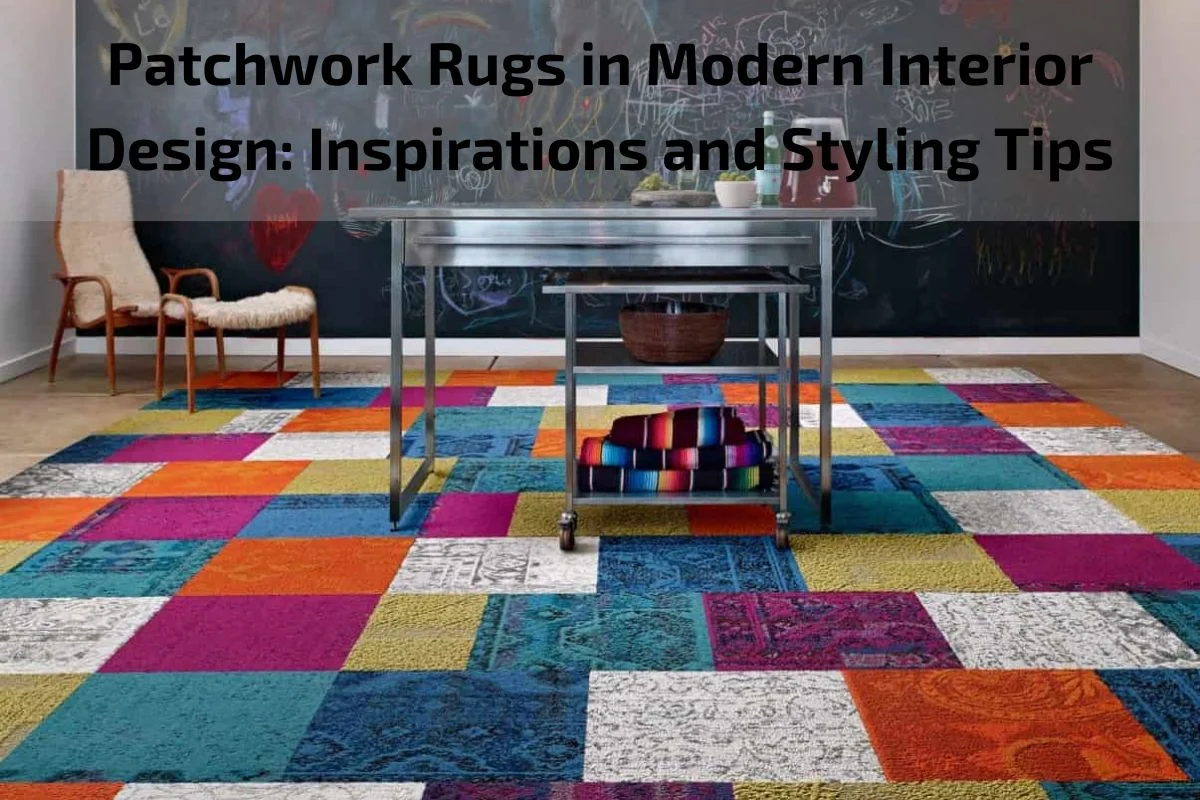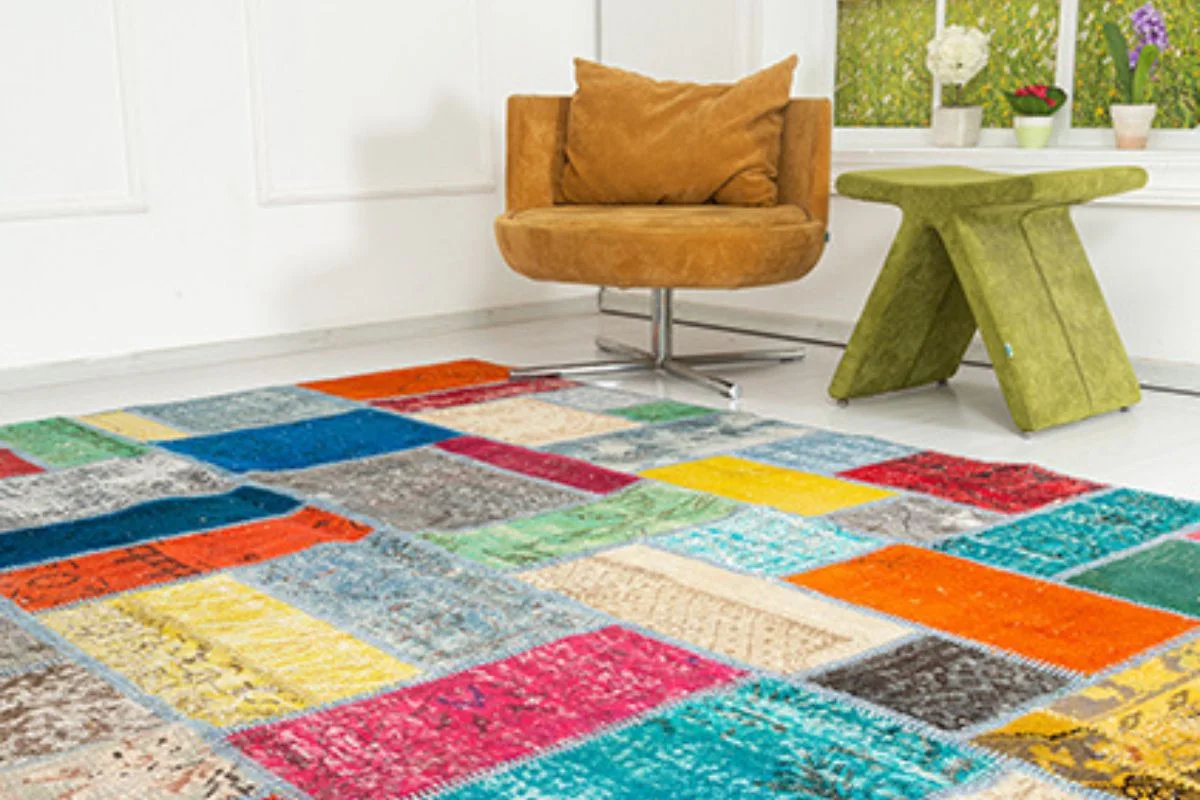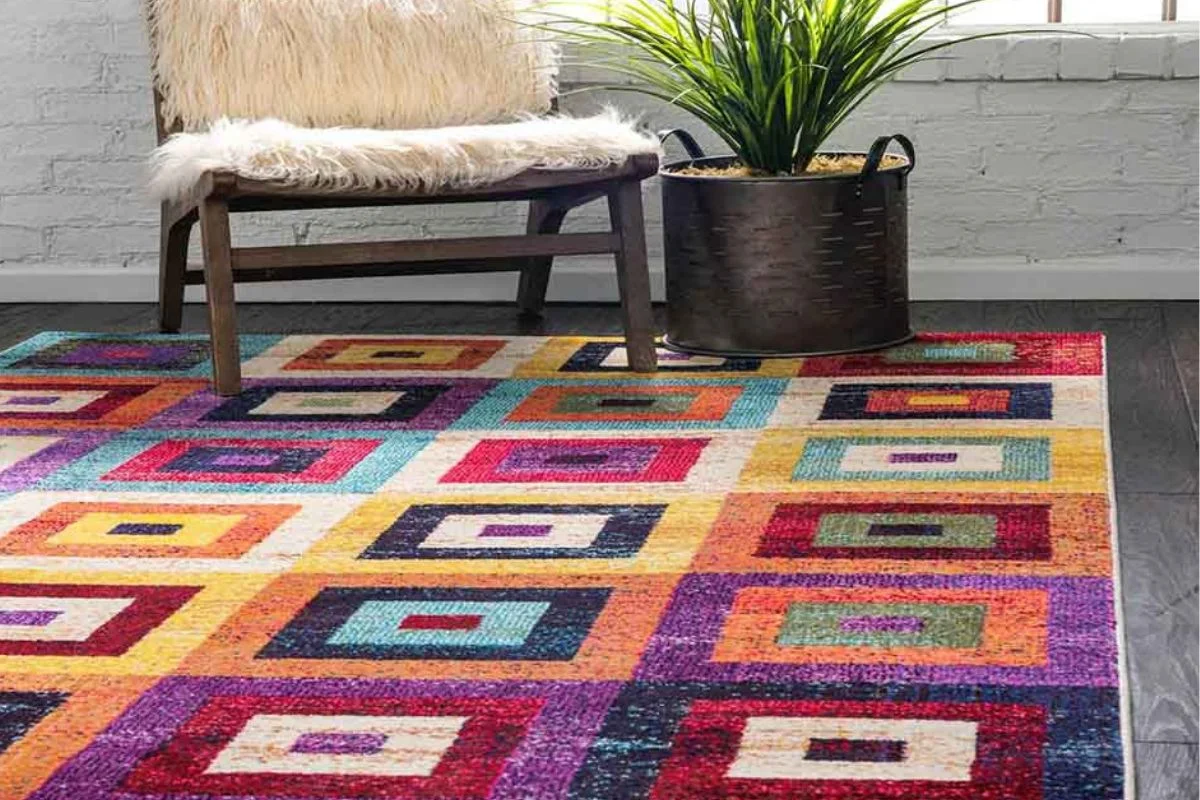Patchwork Rugs in Modern Interior Design: Inspirations and Styling Tips

In the ever-evolving landscape of interior design, the eclectic charm and artistic flair of patchwork rugs have emerged as a versatile and captivating trend. These unique floor coverings, crafted from an assemblage of carefully selected fabric remnants, offer a tapestry of colors, textures, and patterns that add depth and personality to modern living spaces.
In this guide, we embark on a journey through the world of patchwork rugs, exploring the boundless inspirations and styling tips that elevate them from mere floor coverings to statement pieces within contemporary interiors. Whether you’re drawn to the bohemian allure of vibrant patchwork designs or the rustic charm of vintage-inspired motifs, patchwork rugs offer endless possibilities for infusing your home with character and creativity.
Brief overview of patchwork rugs
Patchwork rugs are unique floor coverings crafted by piecing together various segments of different rugs. These segments are typically sourced from vintage or antique rugs that are no longer in usable condition. The patches are carefully selected, cut, and stitched together to form a new, cohesive design. This process creates a one-of-a-kind rug with a distinctive look, blending different colors, patterns, and textures into a harmonious whole. Patchwork rugs often showcase a blend of traditional and contemporary elements, making them versatile additions to any space. They can add character and warmth to a room while also serving as focal points or conversation pieces. Additionally, patchwork rugs are valued for their sustainability, as they give new life to old textiles that might otherwise be discarded.
Patchwork rugs play a significant role in interior design for several reasons:
Unique Aesthetic Appeal: Patchwork rugs are crafted by assembling pieces of various rugs or fabrics together, creating a distinctive mosaic-like pattern. This uniqueness adds visual interest and character to any room, making it a focal point of the interior design.
Versatility: These rugs come in a wide range of colors, patterns, and sizes, making them versatile pieces that can complement any design style, from traditional to modern. They can be used in living rooms, bedrooms, dining areas, or even offices, adding warmth and personality to the space.
Customization: Since patchwork rugs are made by piecing together different elements, they offer a high level of customization. Designers and homeowners can mix and match colors and patterns to create a rug that perfectly suits their taste and complements the existing decor of the room.
Historical and Cultural Significance: Patchwork rugs often incorporate elements from traditional rug-making techniques and designs, reflecting the rich cultural heritage of various regions. These rugs can add depth and storytelling to a space, connecting it to different cultures and traditions.
Textural Interest: The combination of different fabrics and materials in patchwork rugs creates a textural richness that can enhance the tactile experience of a room. From smooth silks to plush wools, these rugs offer a sensory delight underfoot.
Sustainability: In today’s eco-conscious world, patchwork rugs are gaining popularity for their sustainable attributes. By repurposing old rugs or fabrics, these rugs contribute to reducing waste and promoting a more environmentally friendly approach to interior design.
Advantages and Disadvantages of patchwork rugs
Advantages:
Unique Aesthetic Appeal: Patchwork rugs offer a distinctive and eye-catching look due to their mosaic-like patterns created by assembling different pieces of rugs or fabrics. This uniqueness adds character and visual interest to any room.
Versatility: These rugs come in a wide range of colors, patterns, and sizes, making them versatile pieces that can complement various design styles and fit into different spaces such as living rooms, bedrooms, or offices.
Customization: Patchwork rugs allow for a high level of customization since designers and homeowners can mix and match colors, patterns, and materials to create a rug that perfectly suits their taste and complements the existing decor of the room.
Cultural Significance: Many patchwork rugs incorporate elements from traditional rug-making techniques and designs, reflecting the rich cultural heritage of different regions. This adds depth and storytelling to a space, connecting it to different cultures and traditions.
Textural Interest: The combination of different fabrics and materials in patchwork rugs creates a textural richness that enhances the tactile experience of a room. From smooth silks to plush wools, these rugs offer a sensory delight underfoot.
Sustainability: Patchwork rugs are often made by repurposing old rugs or fabrics, contributing to reducing waste and promoting a more environmentally friendly approach to interior design. This sustainable aspect appeals to eco-conscious consumers.
Disadvantages:
Durability: Patchwork rugs may be less durable compared to traditional rugs made from a single piece of material. The seams where different pieces are stitched together can be prone to wear and tear over time, especially in high-traffic areas.
Maintenance: Cleaning and maintaining patchwork rugs can be more challenging than cleaning single-piece rugs. Dirt and debris may accumulate in the seams, requiring extra effort to ensure thorough cleaning.
Cost: Custom-made patchwork rugs or those crafted from high-quality materials can be expensive due to the labor-intensive process of assembling and stitching together the different pieces. This cost may deter some consumers from investing in patchwork rugs.
Consistency of Design: Achieving a consistent and cohesive design with patchwork rugs can be challenging, especially if the pieces used vary significantly in color, pattern, or texture. This inconsistency may affect the overall aesthetic appeal of the rug and the room.
Limited Availability: Finding patchwork rugs that meet specific design preferences or size requirements may be difficult, as they are often produced in limited quantities or as custom-made pieces. This limited availability can restrict options for consumers.
Choosing the Right Patchwork Rug
Choosing the right patchwork rug involves considering several factors to ensure it complements your space and meets your design preferences. Here are some tips to help you select the perfect patchwork rug:
Size and Shape: Measure the area where you intend to place the rug to determine the appropriate size and shape. Consider whether you want the rug to cover the entire floor or act as a focal point in a specific area. Rectangular, square, round, and runner-shaped patchwork rugs are available, so choose one that fits your space best.
Color and Pattern: Select a patchwork rug with colors and patterns that harmonize with your existing decor and furnishings. Consider the dominant hues in the room and choose a rug that either complements or contrasts with them. Additionally, assess the scale of the patterns to ensure they suit the size of the room and furniture.
Material and Texture: Patchwork rugs can be crafted from various materials, including wool, silk, cotton, and synthetic fibers. Each material offers different textures and qualities, so consider factors such as comfort, durability, and maintenance requirements. Decide whether you prefer a soft and plush feel or a more structured and durable texture.
Style and Design: Determine the style and ambiance you want to achieve in your space. Patchwork rugs come in a range of styles, from traditional and vintage to modern and eclectic. Choose a rug that complements the overall theme and aesthetic of your room, whether it’s classic elegance, bohemian chic, or minimalist sophistication.
Quality and Craftsmanship: Assess the quality of the patchwork rug, including the stitching, seam strength, and overall construction. Look for well-made rugs with tightly secured seams and durable materials that can withstand regular use. Consider purchasing from reputable retailers or artisans known for their quality craftsmanship.
Budget: Set a budget for your patchwork rug purchase and explore options within your price range. Keep in mind that factors such as size, material, design complexity, and brand can influence the cost of the rug. Balance your budget with your desired quality and aesthetic preferences to find the best value for your investment.
Try Before You Buy: If possible, see the patchwork rug in person or request samples to assess its colors, textures, and overall appearance. Viewing the rug in different lighting conditions can help you make an informed decision and ensure it meets your expectations before making a purchase.
Care and Maintenance of patchwork rug
Proper care and maintenance are essential to preserve the beauty and longevity of your patchwork rug. Here are some tips to help you keep your rug looking its best:
Regular Vacuuming: Vacuum your patchwork rug regularly to remove loose dirt, dust, and debris. Use a vacuum cleaner with a brush attachment or a handheld vacuum to gently clean both the surface of the rug and the seams where different pieces are stitched together. Avoid using a beater bar or rotating brush, as it may damage the rug’s delicate fibers.
Spot Cleaning: Immediately attend to spills and stains to prevent them from setting into the rug. Blot the affected area with a clean, dry cloth to absorb as much liquid as possible. Avoid rubbing the stain, as it can spread and penetrate deeper into the fibers. Use a mild detergent solution or a specialized rug cleaner recommended by the manufacturer to gently spot clean the stain. Test the cleaning solution on a small, inconspicuous area of the rug first to ensure compatibility.
Professional Cleaning: Periodically, have your patchwork rug professionally cleaned to remove embedded dirt, stains, and odors. Choose a reputable rug cleaning service experienced in handling delicate textiles like patchwork rugs. Avoid steam cleaning or hot water extraction, as excessive moisture can damage the rug’s fibers and cause colors to bleed.
Rotate Regularly: Rotate your patchwork rug periodically to ensure even wear and fading. High-traffic areas may show signs of wear more quickly than others, so rotating the rug every few months can help distribute the impact and prolong its lifespan.
Protect from Sunlight: Direct sunlight can cause colors to fade and fibers to deteriorate over time. Place your patchwork rug away from windows or use window treatments such as blinds or curtains to filter sunlight and minimize UV exposure. If fading occurs unevenly, consider rotating the rug or using rugs pads to provide additional cushioning and protection.
Use Rug Pads: Place a rug pad underneath your patchwork rug to provide cushioning, prevent slipping, and protect your floors. Choose a rug pad specifically designed for use on hardwood, tile, or carpeted surfaces. Trim the rug pad to fit the dimensions of your rug and regularly check for any signs of wear or deterioration.
Avoid Heavy Furniture: Avoid placing heavy furniture directly on your patchwork rug, as it can cause indentations and damage the fibers over time. Use furniture coasters or felt pads underneath the legs of furniture to distribute weight evenly and protect the rug’s surface.
Conclusion
In conclusion, patchwork rugs offer a unique blend of aesthetic appeal, versatility, and cultural significance in interior design. Their mosaic-like patterns, customizable designs, and textural richness make them a compelling choice for enhancing any space.




0 comments